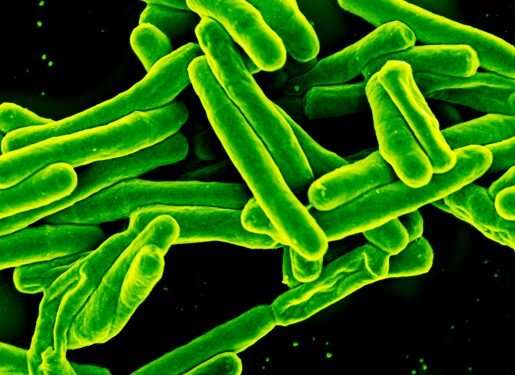Research team finds that tuberculosis induces premature cellular aging

Tuberculosis (TB) is a potentially serious infectious disease caused by a type of bacterium called Mycobacterium tuberculosis. The bacteria usually affect the lungs, but also can invade other organs.
In 2018, tuberculosis bacteria infected 1.7 billion people—roughly 23% of the world's population, according to the Centers for Disease Control and Prevention (CDC). In 2020, the CDC reported 7,174 TB cases and 13 million people living with a latent tuberculosis infection (the germs are in the body but do not cause sickness) in the United States.
Even after successful therapy for tuberculosis, survivors of the disease have an increased risk of recurrent infection and death. A new study published recently by researchers at Baylor College of Medicine found that the cells of humans and animals who have recovered from tuberculosis had prematurely aged up to 12 to 14 years.
"It's possible that this premature cellular aging is one reason why survivors of tuberculosis have a high risk of mortality," said Dr. Andrew DiNardo, assistant professor of infectious diseases at Baylor College of Medicine and senior author of the paper.
To measure the aging of the cells, researchers looked at the epigenetic clock of the cells. Epigenetics looks at how the DNA inside every cell is coiled. As we age, how the DNA is coiled changes, and severe infection is changing it in such a way to increase premature aging.
In this study, the researchers studied multiple cohorts and multiple tissue types, and discovered that tuberculosis induced perturbations in epigenetic regulation, specifically in the regulation mediated by DNA methylation. These changes correlated with oxidative stress-induced senescence and was associated with premature cellular aging. These processes were conserved across both guinea pigs and humans.
DiNardo, who is also with Texas Children's Hospital, says that this is an important area to look into after any severe infection, including sepsis or even SARS-CoV-2. The severity of the infection also could play a role in the aging of the cells.
"A multi-omic epigenetic clock assay could become part of the standard of care for infectious diseases and further inform increased risk for comorbidities after chronic conditions or environmental exposure," said Dr. Cristian Coarfa, associate professor of molecular and cellular biology at Baylor and co-corresponding author of the paper. Coarfa also is with the Dan L Duncan Comprehensive Cancer Center at Baylor.
A multi-omic approach would integrate epigenomics and other "'omics," such as proteomics (proteins produced), metabolomics (metabolites present) and microbiomics (microorganisms) data.
"Now that we know the mechanism, there are some ways that we can target it to slow down and decrease the premature epigenetic aging that is happening in these cells," Coarfa said.
Their report appears in the journal Aging.
More information: Carly A. Bobak et al, Increased DNA methylation, cellular senescence and premature epigenetic aging in guinea pigs and humans with tuberculosis Aging (2022). DOI: 10.18632/aging.203936



















